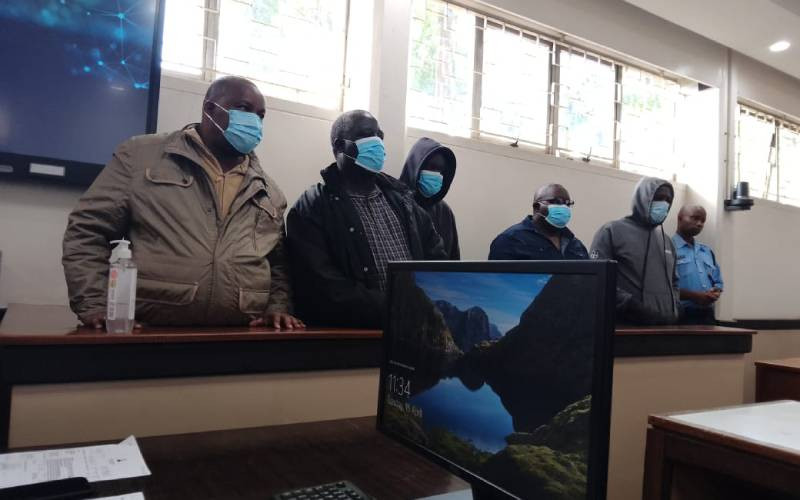By John Oyuke
Kenya’s premier safari destination, Masai Mara national reserve has been the pillar of the Sh100 billion tourism sector for decades.
But the national reserve that is famed for its annual wildebeest’s migration could soon be just pale shadow of itself, as the effects of an imbalance between the expansion of tourism and continued natural degradation put it at the crossroads of history.
And the biggest gainer of the changing fortunes is Tanzania’s Serengeti National Park, which is within the same ecosystem but has better management policies and is witnessing an increasing number of animals.
Blame has been laid on the mushrooming of tourist lodges and camps that are competing for space, pushing wildlife sensitive to human activities like lion, rhino, and elephant to Serengeti in Tanzania.
And the country is also standing dangerously close to losing its most popular tourist attraction – the annual Wildebeest Migration.
Tanzanians living around the Serengeti Game Reserve have allegedly set the area on fire delaying the crossing of the wildebeest from Serengeti plains into Kenya in July.
But that is just the tip of the iceberg. Experts say the increasing human activities on the Kenyan side of the Serengeti eco-system might discourage the animals from crossing over in future as they have been doing for years in their annual migration forays.
Rushing back
This assumption stems from the sudden change in the animals’ migratory patterns when the wildebeests stayed for only three weeks in the Mara, instead of the usual three-month, before rushing back to Tanzania.
According to a Tourism Conservator at Serengeti National Park, Seth Mihayo, the Masai Mara Reserve of Kenya, the recipient of the annual wildebeests migration from Tanzania, is currently experiencing mushrooming of hotels, human activities such as cattle grazing and the depletion of the natural green cover.
“Wildebeests usually travel in groups but a single car or a group of people is enough to disrupt the entire herd causing them to divert their course of movement. You can imagine the effect of massive buildings, batteries of vehicles and domestic animals crossing their paths,” he told journalists last month.
Serengeti-based Ecologist, Dr James Wakibara explained that scientists have not been able to find out why the 1.5 million wildebeest — and nearly 300,000 zebras, buffalos and a number of gazelles that form the annual mass movements of herbivores — migrate from Tanzania to Kenya.
“Food, water, rains or predators as possible driving forces have all been theories that were never proven. And so is the sudden change in the number of days spent in Kenya, that also needs thorough study and extensive investigation,” he stated.
However the ecologist said it was not normal for the animals to suddenly cut short their stay in Kenya and rush back home.
Stay informed. Subscribe to our newsletter
Environment destruction
Mustafa Akonaay, executive secretary of Tanzania Association of Tour Operators (TATO) admitted to have received concerns regarding the environment destruction on the Kenyan side of the Serengeti Eco-system.
Since the return of the animals has happened for the first time this year, the association might have to wait until 2013 to see if the same pattern is repeated. But if the pattern repeats itself, then as the tour operators will change their programme calendars and fliers to inform the entire world that the Serengeti Migration times and pattern has changed
“But here at TATO we are not worried because the animals will remain in Tanzania and this means that all tourists will be coming here instead of going to Kenya,” concluded Akonaay.
Touring the Mara last month, Tourism Minister Dan Mwazo shared concern over the game reserve and called for concerted efforts in the management and running of the Masai Mara in Narok County.
He said for proper running of the world’s renowned tourist destination, there must be a master plan or the Mara management plan by stakeholders to guide the development and investments in the Mara.
He also urged the government to seriously consider developments in the Mara, saying issues ranging from the poor state of the roads to other infrastructure might hurt the country’s tourism prospects.
Poor State
“It is unfortunate that the road to the Mara has remained in a poor state despite calls to have the road renovated,” Mwazo who had joined local and international tourists in witnessing the annual wildebeest’s migration said.
He noted that Masai Mara collects to a tune of Sh2.6 billion annually, which if utilised, well could benefit the region and encourage more tourists through improvement of infrastructure.
Among other things that the minister noted for improvement includes establishment of signage to direct tourists to various points. The Mara game Reserve is estimated to receive 4,000 tourists daily.
 The Standard Group Plc is a
multi-media organization with investments in media platforms spanning newspaper
print operations, television, radio broadcasting, digital and online services. The
Standard Group is recognized as a leading multi-media house in Kenya with a key
influence in matters of national and international interest.
The Standard Group Plc is a
multi-media organization with investments in media platforms spanning newspaper
print operations, television, radio broadcasting, digital and online services. The
Standard Group is recognized as a leading multi-media house in Kenya with a key
influence in matters of national and international interest.
 The Standard Group Plc is a
multi-media organization with investments in media platforms spanning newspaper
print operations, television, radio broadcasting, digital and online services. The
Standard Group is recognized as a leading multi-media house in Kenya with a key
influence in matters of national and international interest.
The Standard Group Plc is a
multi-media organization with investments in media platforms spanning newspaper
print operations, television, radio broadcasting, digital and online services. The
Standard Group is recognized as a leading multi-media house in Kenya with a key
influence in matters of national and international interest.







